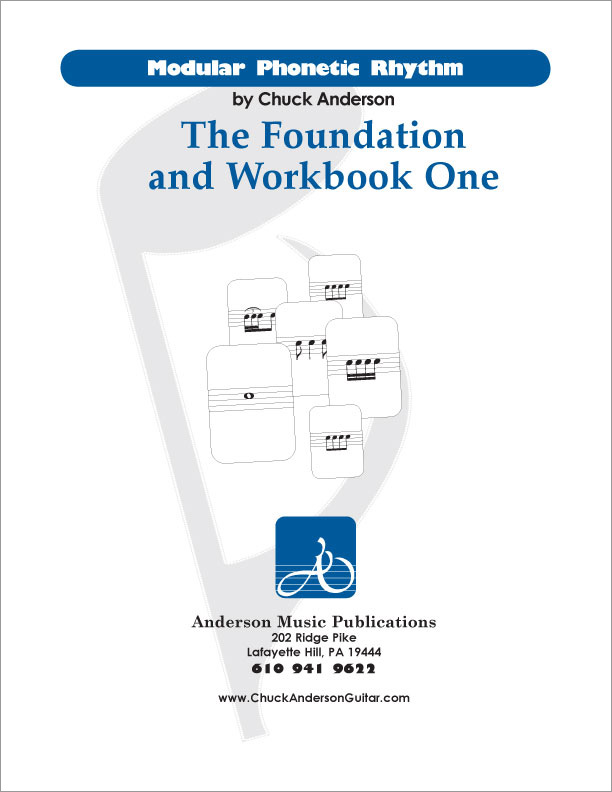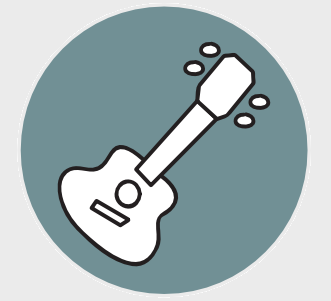Just what is "Swing". This lesson will have you playing Traditional Swing, Hard Swing. As well as how it applies to various styles.
Swing, Shuffle, Boogie Woogie,...
In music, the term swing has two main uses. Colloquially, it is used to describe the propulsive quality or feel
of a rhythm, especially when the music prompts a visceral response such as foot-tapping or head-nodding. This sense can also be called groove. It is also known as shuffle
.
And really, it's just Rhythm, a rhythmic pattern applied to various styles.
Swing is an interpretation of the traditional even eight notes involving alternately lengthening and shortening the first and second consecutive notes.
Even Quarter Notes
To discuss what type of notes can be sung. We need to cover what type of notes can not be swung.
Quarter notes can not be Swung
.

Even Quarter Notes — Level I Modular Phonetic Rhythm
So basically you can not swing the downbeat.
Even Eight Notes
Each eight of a pair are given equal time (length).


Even Eight Notes — Level II Modular Phonetic Rhythm
Traditional Swing Eight Notes

Written

Played

Traditional Swing Eight Notes — Level III Modular Phonetic Rhythm
Hard
Swing Eight Notes

Written

Played

Hard
Swing Eight Notes — Level III Modular Phonetic Rhythm
Level II Modular Phonetic Rhythm Syllables
Level II Modular Phonetic Rhythm Syllables are where the beat is sub-divided in two and is the beat sub-division that can be swung.
Written

Level IIS Modular Phonetic Rhythmic Syllables
Played

Level IIS Modular Phonetic Rhythmic Syllables with Count
Summary
That is Swing
, both Traditional Swing and Hard Swing. It all comes down the simplifying counting to learn the sound of and rhythmic figure/pattern.
It's possible to have other subdivision of 3 into 2. However the Traditional Swing and Hard Swing versions are the most common.
Related Lessons, Videos, Lesson Series, Songs, Books & Reference Charts, Resources & Assets, Workshops are below.

Modular Phonetic Rhythm represents a significant advance in the teaching and application of rhythm. Eliminating many inefficient aspects of rhythm education, Modular Phonetic Rhythm streamlines the traditional educational approach, resulting in a reflexive reaction to rhythm.

Modular Phonetic Rhythm represents a significant advance in the teaching and application of rhythm. Eliminating many inefficient aspects of rhythm education, Modular Phonetic Rhythm streamlines the traditional educational approach, resulting in a reflexive reaction to rhythm.

Finally, learn the names of the notes of the ukulele fingerboard in C tuning .

Learn the six fingering principles to navigating the ukulele fingerboard. Fingering is one of the most universal topics. Book: Six Secrets of the Ukulele Fingering

Harmonic Analysis is the understanding of the functional sequence of chords. It is the process used to analyze the harmonic structure of a progression, song or composition. Book: Harmonic Analysis for Scale Selection and Chord Substitution

Learn to read single note melodies in the first/open position is a lot easier than you might think. Book: Ukulele – Reading Music Series – Primer

An organized collection of daily practice and reference material for the contemporary ukulele player for developing the vocabulary and knowledge necessary for single note playing. Book: Daily Practice Material for the Contemporary Ukulele
Checkout the Books & Reference Charts for additional Handy, Dandy Reference Charts.

Ukulele Fingerboard Chart for C Tuning, Low or High G – G C E A

Ukulele Fingerboard Chart for G Tuning, Low or High A – D G B E

A handy reference chart of all 15 major and relative minor key signatures. US Letter 8.5 x 11 sized (ANSI-A), A4
Checkout the Books & Reference Charts for additional Handy, Dandy Reference Charts.





.jpg)